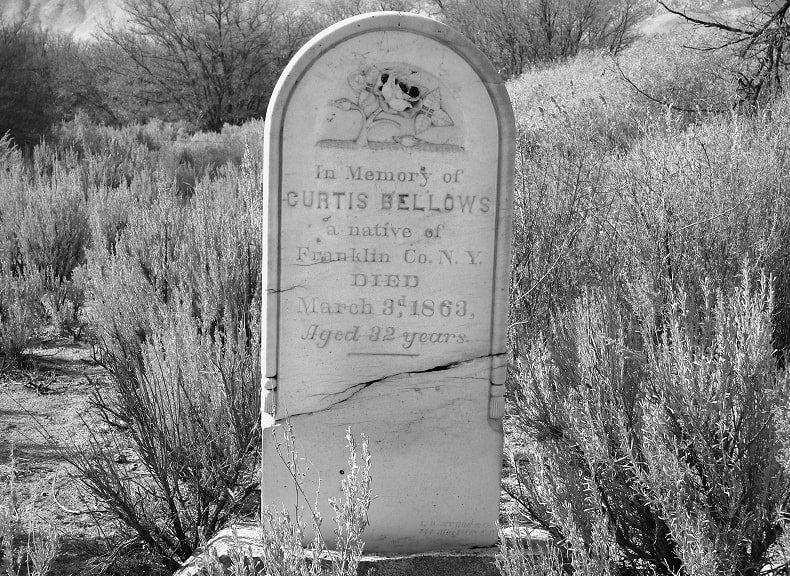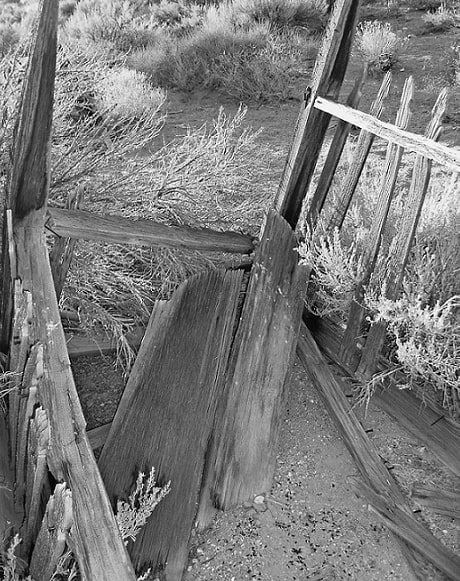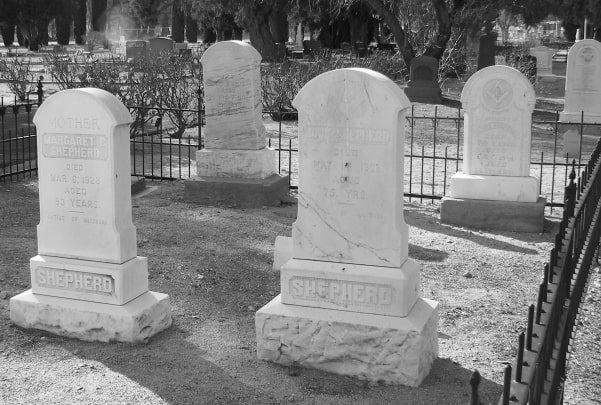Introduction: In this article, Gena Philibert-Ortega provides genealogy tips for researching cemeteries that she learned while writing a book on cemeteries in eastern California. Gena is a genealogist and author of the book “From the Family Kitchen.”
In 2007 I wrote a book titled Cemeteries of the Eastern Sierra (Arcadia Publishing) that focused on the images and history of cemeteries in the Eastern Sierra region of California. This required a lot of research in various repositories online and off, as well as the cemeteries themselves. That experience taught me a lot about cemeteries and what mistakes we genealogists make in searching for our ancestors.

Not Everyone’s Grave Is Marked
While we would like to easily find our ancestor’s final resting place well marked, that’s not always the reality. Not everyone had a gravestone and that, unfortunately, is still true today.
The cost associated with final burial arrangements is expensive, and that was even true for our ancestors. Gravestones can be expensive and not everyone’s family can afford one. They might have delayed marking the grave thinking they would eventually get around to it – and instead life got in the way.
It’s also important to remember that not everyone leaves family behind. No close family, or being the person who outlives everyone else, may mean that no one is around to take care of the final details.
Add to that the fact that gravestones can be stolen or destroyed over time. Wooden markers don’t last, and some stone markers don’t always wear well in the elements. When I was writing my book, thieves were stealing the metal inserts from some markers and selling them to metal recyclers. So, if your ancestor’s grave is marked, consider yourself lucky.

Not All Cemeteries Are the Same
Visualize a cemetery. What do you see? Maybe a nice manicured lawn with neat rows of gravestones all lined up. That’s one type of cemetery, but there are others. Cemeteries are different. Yes, there are those beautiful manicured cemeteries – but there are also cemeteries that are forgotten and overgrown. Cemetery types include:
- City Cemetery
- Ethnic Cemetery
- Fraternal Lodge Cemetery
- Mass Burial Site
- Religious Cemetery
- Private Cemetery
- Military Cemetery
- Family Cemetery
Information Changes over Time
When I started my research, the online sources we have today existed, but they were still new. I had to do research the “old fashioned way.” That meant going to the FamilySearch website and conducting a Catalog search to find cemetery transcriptions. Though today we have online options, I still recommend this approach. Why?
In my opinion there are two reasons to combine your online search with old research methodologies. Probably the biggest reason is that not everything is online. Second, things change over time and cemeteries definitely change. As I mentioned previously, tombstones can be stolen or worn with age. Older transcriptions found through FamilySearch or other resources can help you get an idea of that cemetery in that place in time. Which means you might find listings that today you won’t find because the gravestone is illegible or gone.
One last thing. Don’t forget about searching for that cemetery in old newspapers such as GenealogyBank’s Historical Newspaper Archives. You already know that an ancestor’s obituary may include cemetery information. Newspapers can also provide information about the history of that cemetery, which in turn might help explain why you can’t find a burial.
Ready for Some Cemetery Research?
Cemetery research is much more than just taking a drive and snapping some photos of your ancestor’s final resting place. Like all research it can be met with obstacles. Don’t make assumptions about your ancestor’s burial, and make sure to do your homework ahead of time.
Unfortunately, even if you adhere to that advice you still may not find what you’re looking for. However, thorough genealogical research into your ancestor’s burial can help you find answers or at least narrow the search.
Related Articles:
